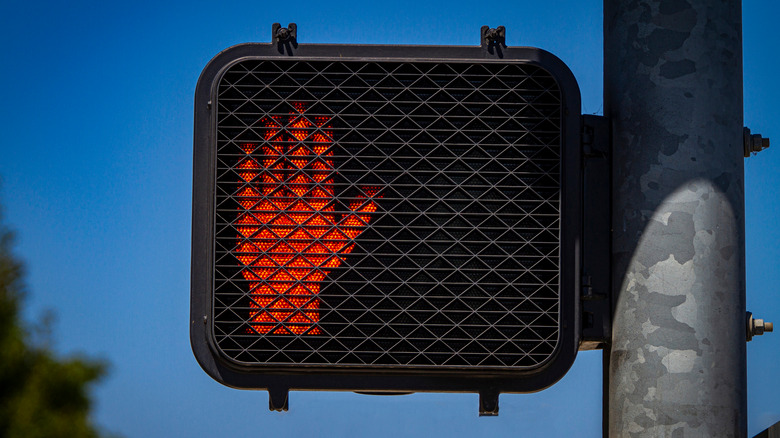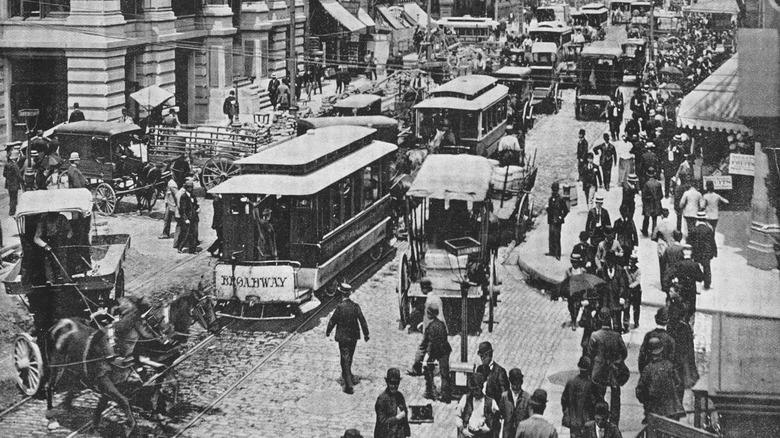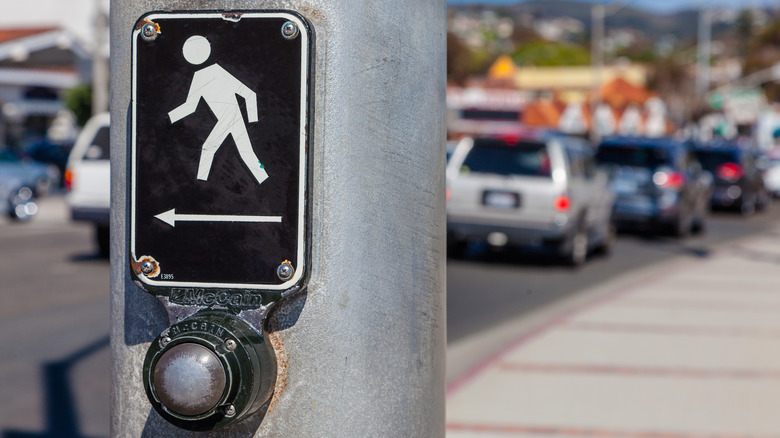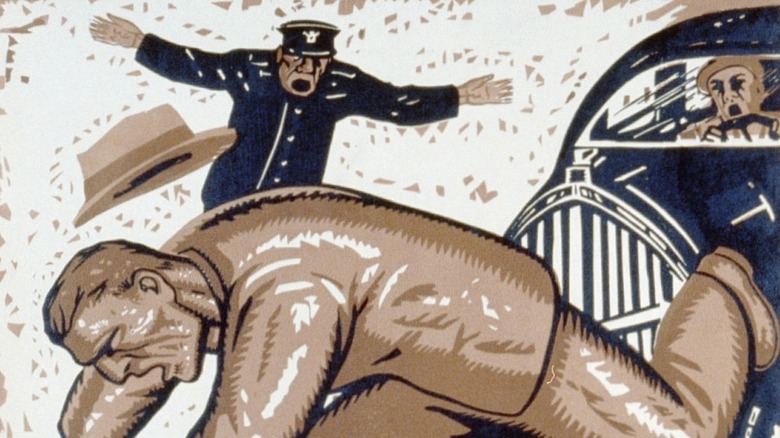The Truth About How Jaywalking Became A Crime
The concept of criminalizing jaywalking might seem like an intuitive one, one that was designed with the safety of the pedestrian in mind. But in fact, the exact opposite is true. Jaywalking was invented by the auto industry as a way of shifting the blame for traffic crimes off automobile drivers and onto pedestrians, rather than out of an actual desire to decrease the number of pedestrian deaths due to automobiles.
In some places, like the Netherlands, jaywalking laws have been removed, giving people the right of way on a road even outside of the zebra crossing. Compared to the Netherlands, the United States has "nearly three times as many traffic deaths per capita" (per StreetsBlogNYC). And while most of Europe doesn't have jaywalking laws, in places like Germany, where the auto lobby is incredibly strong, jaywalking is illegal and also carries a social stigma (per The Local). If people have been crossing the street longer than automobiles have been in existence, how is it that the car is considered to have the right of way in the United States?
Life before jaywalking
At the turn of the 20th century, pedestrians were considered to have the right of way on a road, not automobiles, when it came down to a court of law. Pedestrians would cross the street whenever they wanted, and the few crosswalks that were painted on the street were usually ignored, Vox writes.
This came out of the fact that pedestrians had been around long before automobiles and, according to "The Last Great Walk" by Wayne Curtis, "courts understood that cars were the newcomers and were there by the grace of the walkers." As a result, until the late 1920s, a majority of automobile drivers were found criminally responsible for killing or injuring pedestrians, charged with something along the lines of "technical manslaughter," per Bloomberg.
Pedestrians killed in automobile accidents were treated "as a public loss," and in numerous towns, mayors would dedicate monuments to those who died in a traffic crime. According to "What Shall Be the Cure for the Automobile Speed Mania?," children and the elderly were the majority of those killed in traffic crimes. Overall, the public perception toward automobiles wasn't positive, with newspapers frequently publishing editorial cartoons showing the Grim Reaper driving.
Some activists even advocated for a device for cars that could keep the speed down. When 42,000 people in Cincinnati signed a petition for a device on cars that would limit the vehicle to 25 miles per hour, the automobile industry panicked.
Invented by car companies
By the mid-1920s, the automobile industry and the National Automobile Chamber of Commerce (NACC) sought to shift the blame for traffic crimes. In "Fighting Traffic," Peter D. Norton writes that director of the NACC, Robert Graham, questioned whether or not pedestrians should be described as "innocent victims" and instead thought that "in many cases the driver is a much-to-be-pitied victim."
As early as 1918, the lobbying of the automobile associations was pushing for "the carelessness of the pedestrian" (per Motordom) as the leading cause of traffic accidents. By the 1920s, the National Motorists' Association publicly called asked for the cooperation of "its 350 of more affiliated automobile clubs in the work of helping the pedestrian keep out of the way of motor cars," according to the Journal of the Western Society of Engineers.
Vox writes that the NACC also created a free wire service for newspapers where they would write up articles about traffic accidents. Around this time, says "Fighting Traffic," the Chicago Tribune reported that "almost 90% of the collisions between automobiles and people" were caused by a "reckless pedestrian" and wrote that the simple solution was "Don't jay walk."
In some cities, the automobile industry was also able to shift newspaper coverage by threatening to pull their advertising. By 1924, there was a shift and it became "the fashion to ascribe from 70 to 90% of all accidents to jaywalking," according to Bruce Cobb, magistrate of the New York City Traffic Court.
Jaywalking becomes a crime
When Secretary of Commerce Herbert Hoover sought to create the 1928 Model Municipal Traffic Ordinances (posted at the Hathi Trust Digital Library), the American Automobile Association, the NACC, and the National Association of Taxicab Owners all found themselves a seat at the table. The ordinance was based on the traffic law in Los Angeles, which had some of the earliest "pedestrian controls," underlined by the idea that the only place pedestrians were allowed to cross was at crosswalks. Even then, they were only able to do so at right angles, per Vox.
Initially, these laws were neither followed nor enforced by the police or judges. The lobbying of the automobile industry introduced the element of shame into jaywalking arrests. Rather than simply giving people a fine without causing a fuss, police started "whistling or shouting at [pedestrians] — and even carrying women back to the sidewalk."
Although people first shot back that dangerous driving, or "jay driving," was more dangerous than jaywalking, before long, enough police were enforcing it and enough safety organizations were pushing it that the concept of jaywalking became cemented in the American imagination.
Now, a century later, victims of traffic crimes are the ones being "blamed in media coverage," per The Guardian. The enforcement of jaywalking laws is revealed to often have a racist bias, with Black and Hispanic people receiving 90% of jaywalking tickets given by the New York Police Department in 2019, according to StreetsBlogNYC.



